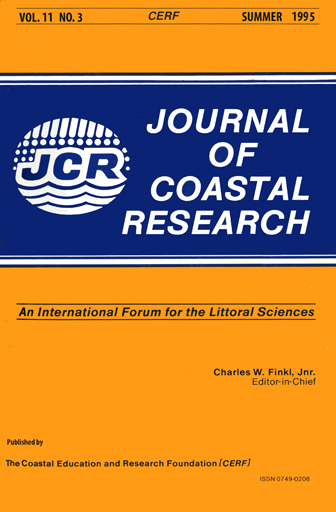Accelerated Sea Level Rise 2,000 Years BP in the Delaware Bay: Stratigraphic Evidence from the Leipsic River Valley, Delaware, U.S.A.
Keywords:
Holocene sediments, estuarine deposits, tidal wetlands, tidal stream, transgression.Abstract
Radiocarbon dating, diatom analyses, and lithologic data from over 50 cores are used to reconstruct the Holocene depositional history of the Leipsic River Valley. Facies sampled in the cores include sand and muddy sand, peat, and olive gray mud. These facies were deposited in river channels and floodplains, tidal wetlands, and broad tidal streams or estuaries. The Holocene estuarine environment of the Leipsic River Valley may have been similar to the modern estuarine environments of drowned tributary valleys of Delaware's Inland Bays.
An estuary or broad tidal stream occupied the valley of the Leipsic River 3620 years BP. By 2300 years BP, emergent tidal wetlands filled the valley. About 2000 years BP, an estuary (or broad tidal stream) once again occupied the valley, drowning the pre -existing emergent tidal wetlands. By 900 years BP, the valley of the Leipsic River was again filled with tidal wetland facies.
The dramatic transgression which drowned the Leipsic River Valley 2000 years BP has also been observed in two other valley fill deposits of the Delaware Bay. Because other factors are unlikely to have caused these widely separated but synchronous transgressive facies changes, the rate of local relative sea level rise probably increased 2000 years ago in the Delaware Bay.


